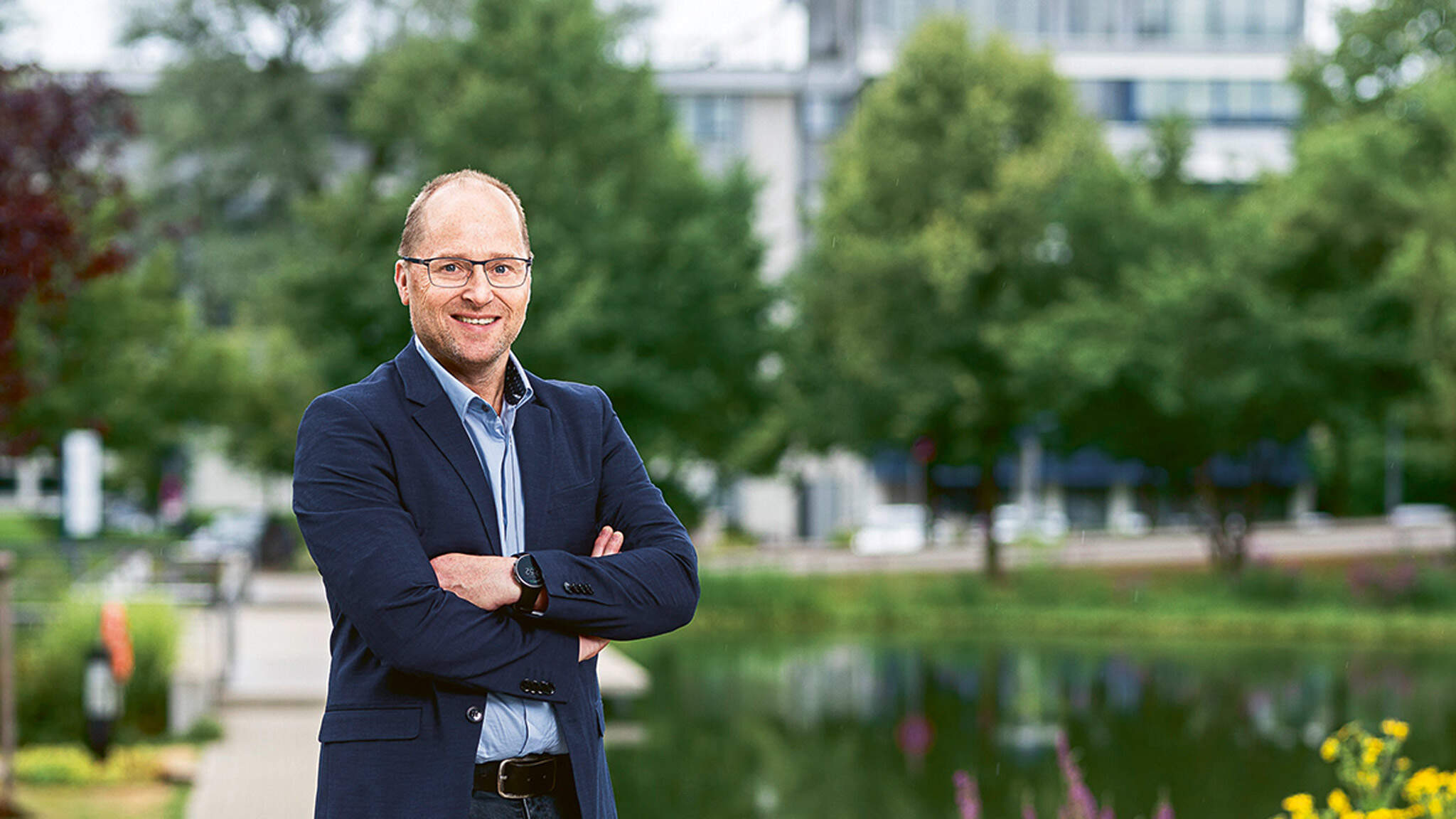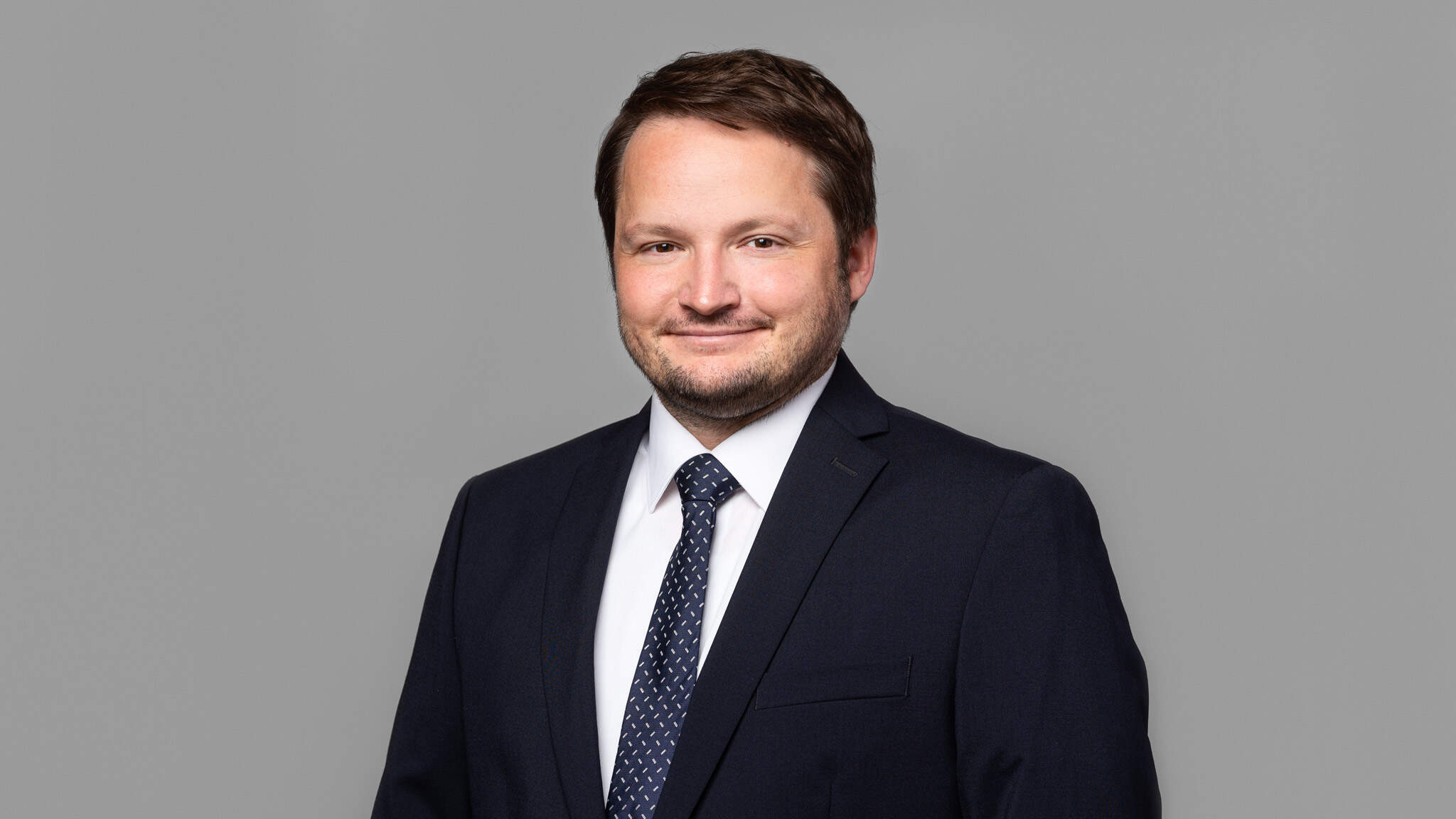A safety professional
It’s Alexander Esters’s job to ensure work processes at DACHSER become even safer. This challenge calls for a lot of organizational talent and communication.

For the Esters family in Kempten, “DACHSER” used to be no more than a familiar company name. This is back when Alexander Esters was working as a training manager in a medium-sized heating, air-conditioning, and plumbing company. Occupational safety was already an important topic for him then. Despite already holding two master craftsman’s diplomas and a degree as a certified technician, he completed part-time training as an occupational safety specialist.
When DACHSER offered him the position of Consultant Work Safety at the Head Office in Kempten, Esters jumped at the chance. “I’ve always been incredibly interested in occupational safety, and it’s something that’s close to my heart. That’s why I was only too happy to accept the new challenge at DACHSER,” the 55-year-old father says. This is not the only reason why the family-owned company is now a hot topic at home: after graduating from secondary school, his son has now started an apprenticeship at DACHSER as a digitalization management agent.
Two family members at DACHSER
“It was really a coincidence—but now we have two members of our family working for DACHSER at once,” Esters says, laughing. You can sense that he delights in his task. At the Head Office in southern Germany, he is part of a four-person team and the first point of contact for the Road Logistics branches in Germany on all aspects of occupational safety.
“My job is full of variety every day. All the inquiries coming in from the branches about occupational safety are always different and interesting, and some of them are unusual.”
“One important task at the moment is to further standardize our processes,” Esters says. This includes, for example, the introduction of uniform HSE software (HSE stands for Health Safety Environment). First and foremost, however, it is the experienced safety expert’s skills as a communicator that are most in demand. Direct, face-to-face meetings with colleagues in the network are immensely important, but for a long time, communication could take place only by telephone and video conference due to the pandemic.
Thankfully, in-person meetings are back on the agenda now. Most recently, Esters spent a week in nearby Memmingen to discuss how to optimize process flows in occupational safety terms with the location’s occupational safety specialist. “After all, it’s also about making sure we don’t obligate our branches to adopt processes that, in the worst case, can’t be integrated efficiently enough into day-to-day work. Instead, we want to find the optimal solution for everyone and also draw on synergies between branches. That way, everyone gets to benefit from the shared knowledge,” Esters says. In the future, for example, we want to record data and measures for the successful prevention of work accidents from the individual branches in one central place so that the shared wealth of experience can be used even more effciently.
The heart of occupational safety measures is generally the STOP principle. S stands for substitution of risks, T for technical measures such as traffic routes, O for organizational measures such as process rescheduling, and P for personal and behavioral measures such as suitable protective equipment. The primary goal of technical safety measures is to keep people as far away from danger as possible. It is always important to keep all information and internal regulations up to date. To this end, Esters recently completely revised the templates for occupational safety guidelines, risk assessments, and operating instructions, to which all employees have access.
Esters and his colleagues also support experts at the branches in the inspection of workplaces and in the acquisition of new work equipment. And he presents the main KPIs to management.

A joint effort
In organizational terms, Esters is part of the Dangerous Goods Management and Occupational Safety team in the Container & Dangerous Goods Management department. “The safe transport of dangerous goods and warehousing of hazardous materials in accordance with regulations are essential for the safety of everyone involved, but also for the environment,” Esters says. That’s why the department cooperates closely to keep tabs on these two topics. The department is part of the Network Management Organization division, which also includes topics such as load securing, packaging management, quality management, and environmental and waste management.
“My job is full of variety every day. All the inquiries coming in from the branches about occupational safety are always different and interesting, and some of them are unusual,” Esters says. One example is the regulations and authorizations that customers must follow when using DACHSER’s own forklift trucks. It’s a question that probably doesn’t arise day after day but does involve safety-relevant aspects.
“In addition to the normal day-to-day work, however, I also try to provide new impetus,” Esters says. For example, a group of experts is currently being put together to deal with the subject of occupational safety, drawing on the best specialists from all branches. The idea is for this body to answer questions submitted from around the DACHSER world—a world that Esters has also quickly come to feel at home in.
